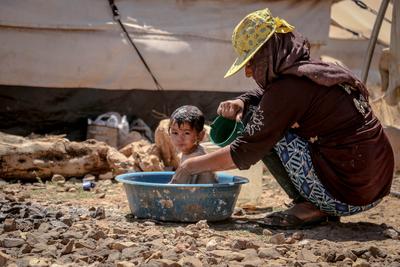
In an article that appeared in Global Health NOW on June 10, 2020, Joanne Silberner, a reporter focusing on global health, posited whether infertility could be viewed in a new lens as a neglected disease. “Infertility in low-income countries is a neglected productive health issue, despite its staggering impact,” wrote Marie Thima, PhD, MHS. “It is also under-measured, especially in low-income settings- but a new approach to measuring the extent of the problem could be a catalyst of change.” However, with overpopulation being more concerning than underpopulation today, is infertility really a public health issue? This question is important, especially in countries that were hit hard with the pandemic and needed to use their resources elsewhere. Even though the height of the pandemic may be behind us, many countries are still using a big portion of their resources to vaccinate people, provide clinical care and test individuals. With that being said, this is not a new issue. Infertility has largely been ignored in low- and middle-income countries for decades. A 2013 paper that appeared in Public Health Ethics by ethicist Marie-Eve Lemoine made the case that fertility is a human right. Although men are more likely to suffer from infertility than women, women are usually blamed for it. Lemoine emphasizes that in developing countries, women who are unable to have children are often ostracized and find themselves isolated from their communities and are likely to suffer economically when their partner leaves them. Researchers concluded that accepting infertility due to the overall population growth is unethical. “Ignoring the needs of the infertile minority,” the paper reads, “is not the appropriate way to control population growth in overpopulated countries” (Joanne Silberner, 2020).
A commission set up by The Lancet and the Guttmacher Institute estimates that the number of couples affected by infertility worldwide is between 49 million and 180 million. The prevalence, or the number of current people affected by infertility, has not decreased in 20 years. 15% of reproductive-age couples worldwide are struggling with infertility, according to a WHO estimate from 2015 (Source: WHO). Infertility is more prevalent in poor countries due to a higher prevalence of untreated sexually-transmitted diseases and infections occuring during pregnancy. Financial support for the treatment of infertility in low- and middle- income countries has been close to nonexistent. The Human Reproduction Programme lists only three small NGOs on its website, with many researchers studying the epidemiology of infertility decrying the lack of funding for treatments. In fact, the first paper by Marie Thoma, an assistant professor at the University Of Maryland who studies the epidemiology of infertility, was unfunded. However, the Guttmacher Institute has offered some support and recently more U.S. governmental agencies have begun to show more interest in global infertility. One of the NGOs dedicated to infertility, The Merck Foundation, has advanced programs like “More than a Mother” in sub-Saharan Africa.The Foundation’s goals are to reduce the stigmatization of infertility by educating the public through fun activities such as dancing and singing, training healthcare providers in those communities, and pushing global governments to increase access to infertility care (Joanne Silberner, 2020).
Rudolph Kantum Adageba is a Ghanaian OB.GYN who runs a clinic in Kumasi, Ghana. He returned to the country after training in Russia, India, and the U.S. in hopes of supporting women’s health in the country. However, none of the OB/GYN clinics in Ghana are funded by the country’s public health sector. Adageba says that the government should be more involved and show more support. “Lack of fertility care is unfair and discriminatory because infertility is a disease,” he said. “It is a huge problem in Ghana not to have children, especially for the women.” For him, the reason the government is not funding OB/GYN clinics is clear: discrimination. “Women are stigmatized, at risk of divorce, at risk of being mocked by other women, and they are not treated with respect,” he said (Joanne Silberner, 2020).
Adageba is now trying to increase interest in infertility. He recalls when, during his residency, nothing could be done to women who had problems like tubal blocking. At his hospital in Kumasi, hundreds of women have to go through around 500 IVF cycles every year, and $4,000 t0 $5,000 out-of-pocket costs, which is much cheaper than fees in wealthier countries but still is a fortune for a majority of Ghanains. Although Ghana has a fairly good health insurance system, fertility treatments are not covered under insurance. “People save for years,”said Adageba about the struggles women have to go through, “They take out loans, sell personal property.” His patients also tend to wait for a long time before finally seeking medical care. “People go for prayers, herbalists, pastors,” he said, “They go to places where the problem cannot be solved, and they waste time and money.” By the time they do seek treatment, the women are usually too old. However, financial concerns are not the only threat to these clinics. The pandemic put a hold on IVF treatments not only in Adageba’s clinics but for clinics all over the world (Joanne Silberner, 2020).
One persistent problem, which you may have guessed by reading the margin of infertility cases worldwide, is counting cases. Thoma’s interest was kindled by the lack of information on infertility in low- and middle-income countries. While writing about infertility among women in the US, she decided to also look into the outlook of poorer countries, but she found barely any information pertaining to infertility in those countries. “Infertility is hard to measure,” Thoma said, “It’s not getting pregnant after a period of time: It’s a non-event.” With the help of other researchers in the field, she was able to come up with theoretical methods to estimate the prevalence of infertility in low- and middle- income countries and published the paper in Human Reproduction.One of the main factors of the problem is that measuring male infertility requires sperm counts, which is costly and requires men to be willing to get a sperm count test, which many men are uncomfortable doing. They will not want to even know in some cases if infertility is assumed to only be the women’s fault (Polis et al., 2017).
Advocates pushing for more attention for infertility say that increasing the availability of medical care must be part of family planning programs. “If couples are urged to postpone or widely space pregnancies,” said Mahmoud Fathalla, former director of Human Reproduction Programme by WHO, “it is imperative that they should be helped to achieve pregnancy when they so decide, in the more limited time they will have available.” If this is not followed, couples might find themselves not using contraception in their younger years (Joanne Silberner, 2020).
The paper by Lemoine says that most governmental institutions have not yet adopted a public health approach to infertility. By using a conceptual framework that focuses on the term public in the context of the health of the public and the public interventions needed to mitigate infertility, she highlighted the need for a comprehensive public health approach towards infertility. Another paper that appeared in Human Reproduction Update has shown that IVF and other ART interventions are inadequate in low- and middle- income countries. The review showed some degree of availability of IVF and other ART services in those countries but also pointed to a need for the development of more affordable and accessible ART overall. The paper has also emphasized that infertility continues to be a global health problem that is not being adequately addressed worldwide. The paper recommends that the World Health Organization should reassess its guidelines and to consider the importance of ART services as a strategy to manage men and women’s infertility in low- and middle- income countries. These updated guidelines will hopefully assist policymakers and people in power to include the management of infertility, including increasing access to IVF and other ART services, in a country’s reproductive health’s agenda and lead to the bettering of reproductive care in low- and middle- income countries globally (Chiware et al., 2020).
With all that in mind, it is clear that infertility can be considered as a neglected disease and requires policymakers to reassess the healthcare systems currently in place in their respective countries and look into whether reproductive care is accessible for both men and women. However, accessible medical care will not mean much if the stigmatization of infertility continues. Therefore, governments must work with community leaders to eliminate the stigma behind infertility, especially in the ways it relates to discrimination against women and the viewing of all infertility as the women’s fault. Only then can interventions be fully realized, and the neglected disease of infertility given the attention it deserves.
Sources:
Chiware, T. M., Vermeulen, N., Blondeel, K., Farquharson, R., Kiarie, J., Lundin, K., Matsaseng, T. C., Ombelet, W., & Toskin, I. (2020, November 25). IVF and other art in low- and middle-income countries: A systematic landscape analysis. OUP Academic. Retrieved June 24, 2022, from https://academic.oup.com/humupd/article/27/2/213/6006235
Infertility as a neglected disease. Global Health NOW. (2020, June 10). Retrieved June 24, 2022, from https://globalhealthnow.org/2020-06/infertility-neglected-disease
Polis, C. B., Cox, C. M., Tunçalp, Ö., McLain, A. C., & Thoma, M. E. (2017). Estimating infertility prevalence in low-to-middle-income countries: An application of a current duration approach to demographic and Health Survey Data. Human Reproduction, 32(5), 1064–1074.https://doi.org/10.1093/humrep/dex025
World Health Organization. (n.d.). Infertility. World Health Organization. Retrieved June 24, 2022, from https://www.who.int/health-topics/infertility#tab=tab_1
|



